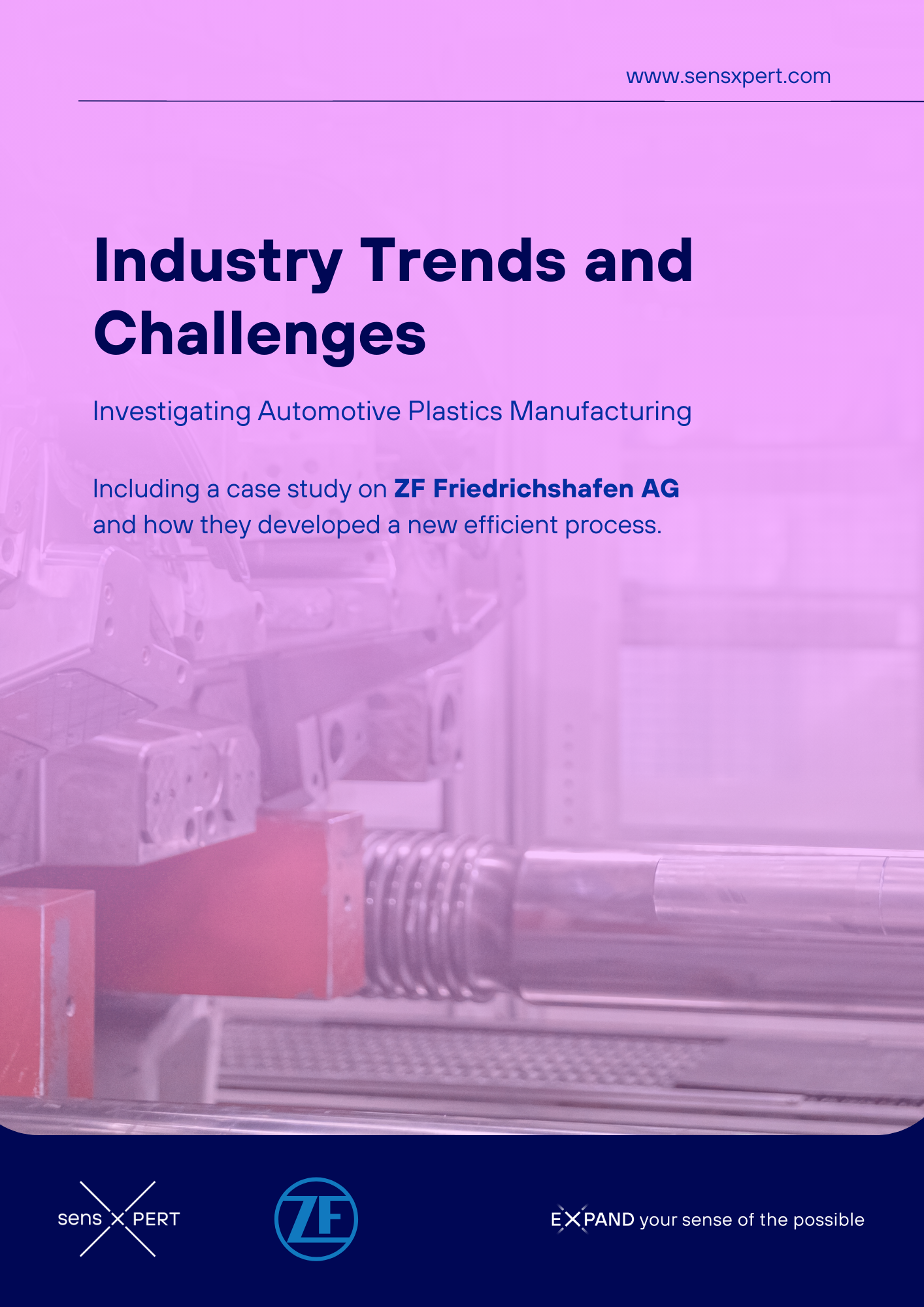Investigating Automotive Plastics Manufacturing
Challenges, trends, and process optimization strategies in automotive manufacturing, including ZF’s innovative approach.
Introduction
Every since its boom in the early 1900s, automotive manufacturing has continued to prosper into the twenty-first century. Cars, vans, public transport, and heavy goods vehicles are becoming ever more accessible, with commercially ready models and their production processes showing profound growth alongside the emergence of Industry 4.0.
Moreover, plastics components play a significant role in the automotive industry. The use of plastics in automotive part production drives innovation and redefines vehicle designs, efficiency, and functionality. However, the COVID-19 pandemic brought with it numerous challenges for plastics production in the automotive industry.
This white paper will guide you through the recent trends of the automotive industry, outline a few historical insights, discuss the advantages of plastics use in automotive manufacturing, list a few commonly used manufacturing processes within the industry, and navigate the various production-specific and industry wide challenges faced by automotive plastics manufacturers. Additionally, we present an insightful case study on ZF Friedrichshafen AG and how they developed a new efficient process with sensXPERT.
What’s inside?
- 21st Century Automotive Industry Trends
- Automotive Plastics Manufacturing Throughout History
- Automotive Plastics Manufacturing Trends: 2023 and Onwards
- Advantages of Automotive Plastics Manufacturing
- Processes in Automotive Plastics Manufacturing
- Production Challenges in the Automotive Industry
- How Automation Improves Production Efficiency
- How Global Automotive Supplier ZF Friedrichshafen AG Developed a New Efficient Process


